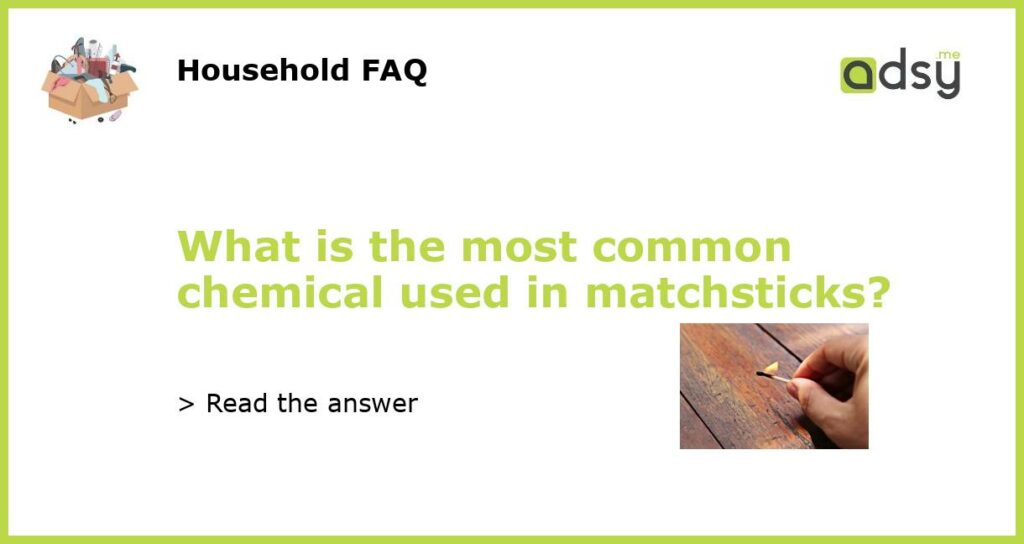The Most Common Chemical Used in Matchsticks: An Overview
Matchsticks are a ubiquitous household item with a long history dating back to ancient times. They are used to start fires, ranging from those in fireplaces to campfires. While the old-fashioned matchsticks were made from wood, modern matchsticks are made using chemicals like phosphorus.
Phosphorus: The Most Common Chemical Used in Matchsticks
Phosphorus is an essential element found in many everyday products, including fireworks, flares, and matchsticks. It is used in matchsticks because of its high reactivity to air, causing it to ignite when struck against a suitable surface. Matchsticks made with phosphorus typically contain red phosphorus, a mildly toxic substance.
The Benefits and Risks of Using Phosphorus in Matchsticks
The use of phosphorus in matchsticks has several advantages, including its low cost, high reactivity, and ability to light in any weather condition. However, the use of red phosphorus in matchsticks poses some health and safety risks. When ingested, it can cause severe damage to organs like the liver and kidneys. The fumes from burning phosphorus-containing matchsticks can also be harmful if inhaled frequently or for long periods.
Alternatives to Matchsticks Containing Phosphorus
In recent years, many countries have started phasing out the use of matchsticks containing phosphorus due to health and safety concerns. The use of alternatives like lighters, electric matches, and fire starters has gained popularity in many households. These products are safer and more convenient than traditional matchsticks but can be more expensive.
The Role of Phosphorus in Matchstick Production
Phosphorus is the most common chemical used in matchstick production, resulting in a highly reactive substance that is ideal for igniting fires. While its use in matchsticks has several benefits, it poses numerous health and safety risks. Therefore, alternative fire-starting products like lighters and electric matches are gaining popularity. Nevertheless, matchsticks remain widely used globally due to their low cost and convenience.






